Birds, Skies, Seasons, and Civilizations

A world without birds is hard to imagine. They exist wherever there are human settlements, tress, wetlands, forests, mountains or where they can breed or have easy access to food. However, many times, for all of us, they are like the stars in the night sky, in that we on rare occasions take the time to contemplate their existence and its meaning to us. Birds, in their vast diversity, have always survived in multiple settings, often going unnoticed by the busy and self-involved human world. As such, it is important for us to recognize the significance and relevance of birds in our ecosystems and in our natural world.
World Migratory Bird Day (WMBD) Organization
has decided to celebrate WMBD twice a year from
now on, on the Second Saturday in May and in October,
making 2018 a transition year in the history of WMBD.
A bird’s body is covered with thin skin that produces feathers. These feathers keep them warm and help them in flying. Birds that fly in the air are called aerial birds and birds that remain in wet lands are known as aquatic birds i.e. they mostly feed in water bodies but lay eggs on land. And the birds that can’t fly are termed as flightless birds that cannot fly or have lost the ability to fly over a lengthy period of time. Their wings have grown smaller as compared to their bodies and among these are the ostrich, the kiwi and the penguin.
Bird diversity (the number of species and the number of birds) in an area is called the avifauna of that area. Hot and humid places have the highest population of birds and other species while cold and treeless places have the lowest of both. The way of distribution is determined by the availability of food and the climatic conditions of the said areas.
In a larger framework, birds can be categorised into resident and migratory birds. Birds that hold a particular territory for all the seasons are resident birds while the ones having a way of life that involves moving from one region to another typically on a seasonal basis are called migratory birds.
Bird Migration
Bird migration can be defined as the seasonal change of habitat in search of suitable environmental conditions, food, to nest and to breed. This phenomenon occurs all around the planet. These birds travel to different regions in different directions, often on the north-south axis, covering thousands of kilometres. However, some birds also move on the east-west axis while some have no definite direction.
Also Read: THE KASHMIRI FLY FISHER’S TALE
Ornithologists (people who study birds) have carefully and minutely studied the pattern, order, physiology, behaviour, types and everything possible about these migratory birds. Most of the birds travel during daytime and use the sun, mountain peaks and earth’s magnetic field to navigate along their migratory routes. Birds that fly during night do it with the help of the pole star, constellations and moon shapes.
Although migratory birds mainly visit certain particular areas (wetlands) in our valley’s Srinagar, Sopore, Baramulla, Pulwama and Ganderbal districts, some of them (mostly aerial birds) could be found all across the valley. Since time immemorial, these birds have flown to Kashmir valley from Siberia, Japan, China and other countries in the northern hemisphere.
Migratory birds follow a definite order during their process of migration. Adult birds migrate first to build nests followed by adult females that are followed by their young ones. This order, however, is reversed on the return. The migration takes place twice in a particular year: once in the autumn (September to October) and once in the spring (mid-February till September ending). The birds that visit the valley during the autumn season are called winter migratory birds and the ones that arrive in the spring are termed as summer migratory birds. Some of the commonly known migratory birds include the following:
Summer Migratory Birds
Quail (Gill)-This is a small, round, brown-streaked bird with a white eye-stripe. It usually makes nests that are difficult to see, in paddy fields and shrubs. This bird is reluctant to fly, but it can fly at a speed of 40 miles per hour. The quail often remains hidden in the grass and is very shy in behaviour. The quail’s feminine-seeming features have inspired Kashmiri people, especially from rural areas, to affectionately call their daughters Gill.
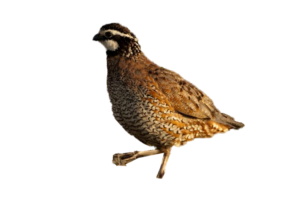
Woodpecker (Kulduder)- A medium-sized bird famous for drumming tree trunks searching insects in the barks. There is a notably long elevated tuft of feathers on the back of its head and its back is light orange with black bars. It spends most of its time in trees, spiraling up the trunks in search of insects. A woodpecker pecks 20 times per second and it produces 12,000 pecks a day.
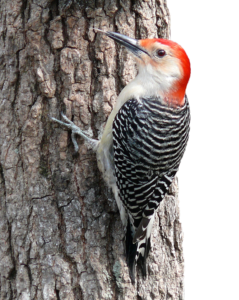
Swallow (Katij)- It is a small, lean bird with blue and black feathers all over. Its throat is coloured brown while the parts of abdomen are white. This bird often makes its nest in human house corridors and interestingly returns to the same nest after migration. It feeds on insects and catches its prey in the air using its superior flying skills. It can fly at the speed of 50-65 kilometres per hour. In older times, the nest of Swallow was used to treat nose bleeding.
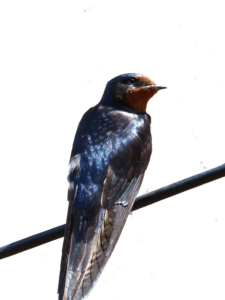
Ring Dove (Kukil)-It is a bird whose melodious tunes echo everywhere all day in our valley for quite a few months. Its arrival marks the beginning of seed sowing season for our farmers. While taking flight, it produces a unique sound. Due to its extreme swiftness it can fly at 72 to 80 kilometres per hour. It makes its nest with little twigs in lower trees and bushes.

Cuckoo (Bael Kuk)-It is a medium-sized bird with grey colour lower body part and the upper parts show broad black bars throughout. It feeds on insects particularly caterpillars and is usually found on top of trees. It is notorious for its quality of deception. It doesn’t make a nest of its own. It eats or throws away one egg from the other’s nest and replaces it with its own. .The host bird looks after the cuckoo egg as its own and hatches it. It can fly at the speed of 70 kilometres per hour. Its arrival marks the beginning of seed sowing season in Kashmir.

Tree-creeper (Ghureunz)- This bird is very small which makes it difficult to spot. It has a curved bill and feeds on insects and spiders. It climbs trees very fast and often flutters down to change position to prey insects. It is a popular myth in Kashmir that if Ghureunz will set another foot on earth, the world will fall apart.

Tickell’s thrush (Kostur)- A small bird with uniform blue-grey upper parts, whitish belly and yellow bill and legs. It nests in bushes in the vicinity of water and feeds on insects and earthworms. It has been seen hunting even after dusk. It has got its name after a British Ornithologist, Samuel Tickell, who worked on these birds in parts of the South Asia.
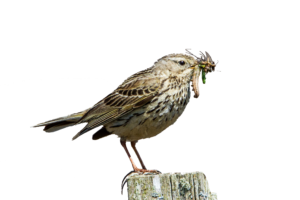
Paradise Flycatcher (Rang Bulbul) – It attracts one’s attention because of its long and beautiful tail. It has a reddish-brown, black and white plumage. Females have a short tail with reddish wings and a black head. It flies skillfully and feeds on insects that it captures in air.

Green Finch (Sabaz Tser) – A small bird similar to a house sparrow but is green with yellow wings and tail and has a thick conical bill. It builds nest in bushes and mostly feed on seeds.

Meadow Bunting (Wan Tser)- It is a monogamous, brown bird with dark streaks on the upper side of body and white outer tail feathers. It makes nest in bushes or on the ground and lays 3-5 eggs which are incubated for 11 days. There is metaphor in Kashmir which says, “Wan Tser hind paeth chui ni kun jai sokh (Like Wan Tser, you never rest at one place).”
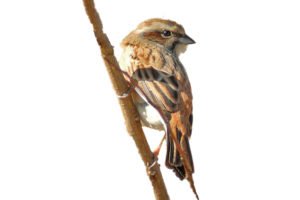
Golden Oriole (Poshi Nul)- This bird is found in woody forests, orchids, gardens and parks and feeds on fruits and insects. Breeds between April and August, it builds a small nest near the end of a branch where it lays 2-3 eggs. Both the parents take part in nest building, brood care and defence against the intruders.

Hoopoe (Satut)- Medium-sized bird with a pointed tuft on head which it spreads while taking flight, in aggression and when landing. It is usually seen alone in gardens and parks digging out worms with its sharp and long beak. To remove indigestible matter, it beats these worms against the ground before eating them up. . Hoopoes are monogamous and fights between rival males are common which often prove fatal. It builds nest in tree holes or walls which have a narrow entrance. The female lays 4-7 eggs of milky blue colour. During the incubation period of 15-18 days, male feeds the female. It is a belief that eating of Satut’s tongue sharpens memory.

Winter Migratory Birds
Black-Throated Thrush (Wande Kostur)- The bird’s upper parts are grey and the under parts white, and its throat and tail are black.. It is confined to forests and is also found along streams or in swampy areas. It nests on lower trees and bushes and sometimes on the rocky ground. It breeds in between May and July and in solitary pairs.

Whiskered Tern (Kreu)-This bird is lean and only large as a pigeon except for the red bill. Wings are so long that they extend to the tail. Although the bird has webbed feet, it spends most of its time in flying in the air or resting on the shore, and are hardly seen descending into water.

Tufted Duck (Thanthur)– A male black duck has white flanks, blue-grey bill and a thin tuft on the back of its head, while the female is brown with pale flanks. These are found in large flocks and feed mainly on aquatic insects. These ducks breed close to lakes and marshes.

Ruddy Shelduck (Iskow)- This specie of ducks has orange-brown plumage with a paler head, and black bill and tail. These produce frequent calls and sounds and are usually found in pairs and flock rarely. These monogamous ducks mostly inhabit in lakes and rivers and nest away from water. The nest is built by the female and about eight eggs are laid. These birds shed most of their body feathers (and not flight feathers) at the end of breeding.
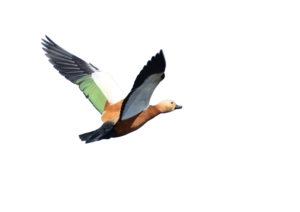
Common Pochard (Khrokh)– This aquatic bird has a red head and neck, black breast, grey back and a dark bill with a grey band. Its breeding habitats are marshes and lakes and it is fond of forming large flocks-especially in the winter, often mixed with tufted ducks. These birds eat aquatic insects and often feed at night.

Garganey (Nor)- It is a small duck that breeds in grasslands adjacent to marshes and lakes. With grey plumage, its head is brown and it has a white crescent over the eye and a dark crown. It produces sounds and shakes its head frequently.

Red-Crested Pochard (Tur)- A herbivorous, large duck with breeding habitat in the lowland marshes and lakes. The bird has a black breast and tail, orange head, and brown back. It is found forming large flocks and mainly feeds by diving into the water. It nests by the lakeside in the grass and lays 8-12 pale green eggs.
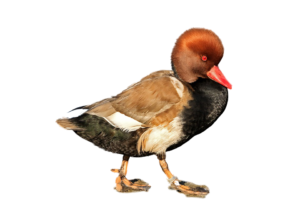
Gadwall (Budan)- A grey-patterned, common and widespread duck with a black back and light chestnut wings. The female is slightly lighter than the male and both are quiet. Its habitat is open wetlands, lakes and marshes. It feeds on aquatic plants but the young ones are fed insects in the beginning. It is one of the most hunted duck species after the Mallard and the green-winged teal in the valley.

Greylag Goose (Aenz)-A large, widespread duck specie with mottled, barred grey and white plumage, orange bill and pink legs, it is a gregarious bird. These ducks form large flocks that saves them from predators. They are herbivorous and consume seeds and grass.. Their habitat is the marshes around lakes and they nest on the ground in shrubs where the female lays 3 to 5 eggs. The incubation is done by the female and the male stays on guard, which usually lasts for 28 days. Aenz gardan (Greylag Goose’s neck) is used as a compliment or to describe a beautiful neck in Kashmir.
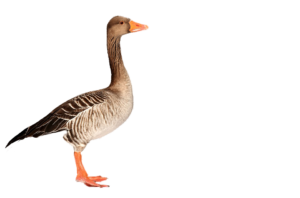
Mallard (Neluj/Thuj)- A duck specie with a glossy green head, purple-tinged brown breast, pale grey belly, grey-brown wings, and a black back with white-bordered dark tail, it is widely distributed in wetlands, ponds, rivers and lakes. It feeds on grass, insects and worms. It is a social bird and often form flocks and build nests on river banks. The female lays 8-13 eggs on alternate days and incubates them for 28 days. The ducklings are fully capable of swimming as soon as they are hatched.
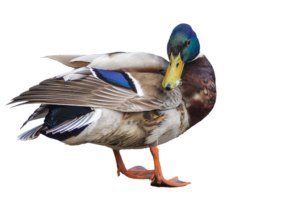
Northern Pintail (Sokhe Pechin)-A large and widely distributed duck with blue-grey bills and grey legs and feet, with grey, brown, and black patterns on its back and sides, it is a bird of open wetlands, wet grasslands and lake sides. . However, it nests on ground and stays hidden in vegetation, often with some distance from the water. It feeds by diving for plant food and eats worms mainly in the evening or at night. It is similar to the Mallard but is more slender and elongated, with a relatively longer neck and a longer tail. It swims and flies very fast. Breeding takes place between April and June, and the female lays 7-9 cream-colored eggs.
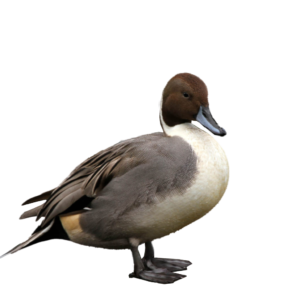
Yellow Wagtail (Khaek Bhobhai)- A small bird with an olive back and a yellow belly, often diluted by white, this insect-feeding bird makes very sharp sounds. It nests near water and lays 4-8 eggs.
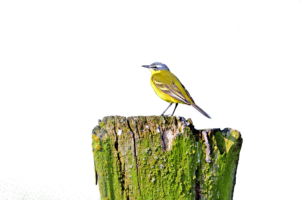
White Wagtail (Dhobbai)- A small insectivorous, slender bird, often habitats near water and nests in stone gaps, it is found constantly wagging its long tail. It has a black cap, black throat, white face and belly, and grey back. This monogamous bird makes sharp sounds often to attract the females. It breeds between April and August and the male starts making a nest with twigs, grass, leaves etc. 3-8 eggs of cream-colored with reddish brown spots are laid. The incubating process is done by both the male and the female, which lasts for 12-16 days.

Coot (Kav-poot)- A small water-bird often found swimming, it has a black plumage, a white bill and shield on the forehead, with red to dark red eyes . Coots have short and rounded wings and strong legs and they feed on grass, worms and small fish. They are sociable birds but turn aggressive during their breeding season.
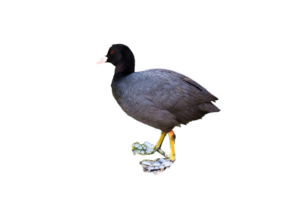
Starling (Tseni Hangur)- This medium-sized, brightly dark bird feeds on insects and fruit. The Starling has strong feet and is very fond of forming flocks. It nests in forests, holes, orchards and around human settlements and lays white eggs. This yellow beaked bird has a capability of producing various sounds and they recognize a particular bird by their call and can imitate many birds.
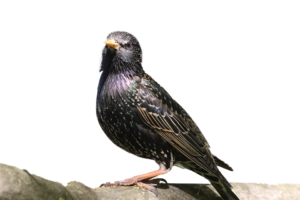
Advertisement

These are the most common migratory birds that visit Kashmir every year. Ironically, only few of us know or have noticed their advent or departure. We, humans, have a tendency to ignore what is in abundance unless it is reduced to its minimum. Water is one particular example of such case that we have polluted to the extent that walking parallel to any water body gives us a feeling of nausea.
Also Read: VIOLENCE AGAINST HER
Tens of aquatic species in Kashmir have become extinct because of such acts. We have converted wet lands, which have been shelter to these birds since the birth of history, into shopping malls and even government institutions. We have bulldozed the trees, cleared the grounds only to fill them with cement and steel.
On the expense of the shelter of hundreds of species, we have created our amusement parks in the name of development. We could have done better. We could have used technology in a much better way to keep everything safe. Our better management of natural resources could have saved hundreds of species.
As you might have noticed, we have only provided basic information about every bird: their colour, speed, Kashmiri names, time of migration, etc. We tried to focus on their intense beauty to give you the feeling of aesthetic bliss. With the result, you might wonder to look up to see the guests that have filled our aerial space with different colours and melodious tunes. Subsequently, we might think what we are losing by snatching the shelter of birds, by contaminating their food, etc. At last, we might retrospect that today it were those species, tomorrow it could be us when nature resorts to take revenge.
Winged Migration
A Jurassic Park in Your Backyard
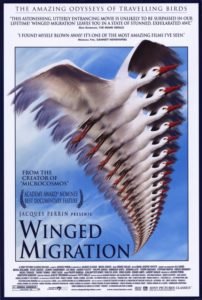
Documentary
Initial Release: 12 December, 2001
Time Duration: 1 hour 30 minutes
Directors: Jacques Cluzaud, Michel Debats and Jacques Perrin
Narrators: Jacques Perrin, Philippe Labro
Released in 2001, Winged Migration is a documentary film directed by Jacques Cluzaud, Michel Debats and Jacques Perrin. It was shot in all the seven continents over a course of four years. It is a one hour 30 minute balm for eyes tired of concrete and man-made superstructures, in which you will find birds in their natural flow and environment. The film is heavy on imagery and evocation, with minimal interference of information. Jacques Perrin, who also wrote the story, does the occasional narration of the story in the background.
The major motif of the film is the songs birds make—from the plaintive Ghulam Hassan Sofie’s que cry of this one to the Raj Begum type of crooning of that one—set to the music of the beating of their wings. The movie manages to evoke a reactions of shock and anger through many of its frames—when a duckling is crushed by a bulldozer clearing a wetland to fill it with earth, cement and steel, when a hunter takes a flock of birds down and their broken bodies fall one by one like snowflakes, when a bird that has lost its wing is struggling to save itself from the crabs who eat it raw in the end, when glaciers crumble and a bird tries to float its boat on a small iceberg.
In nature, life seems all about food and shelter. However, the lesson of the film is that modern generations have ignored birds at their own peril. A poignant moment in the film is when an old lady finds a flock of cranes wandering for food. She brings whatever little she can fetch from her mud-hut in her shaky hands and invites them for a little feast. They gratefully accept her titbits, but the look of ecstasy on her face is a clear indication that it is her who has been enriched by the exchange.
What about you? Have you been enriched by a friendship with a bird lately?
Advertisement


